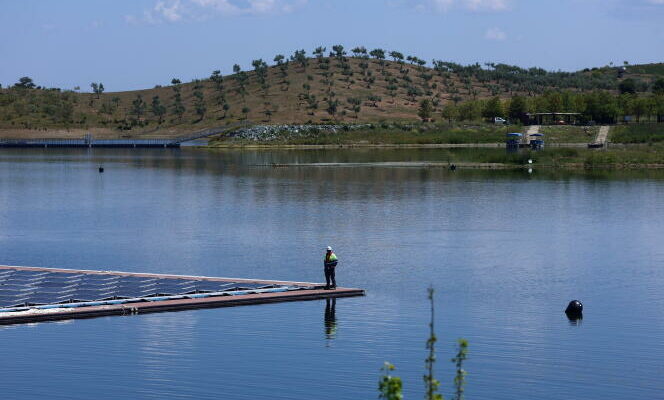Less than an hour’s drive north of Lisbon, through green pastures dotted with old oaks and cows, more than 310,000 bifacial solar panels extend in tight rows in the rural town of Alenquer. While walking along the 170 hectares of the new photovoltaic power plant of the Portuguese energy company EDP, the works manager Nuno Caldeirinha, helmet on his head and construction vest, comments on the scale of the installation with obvious satisfaction: 862 inverters, around thirty energy conversion stations or 5 kilometers of high voltage lines.
Under the radiant sun at the beginning of April, he also rails against the weeds which grow at high speed under the solar panels, calling for the arrival of flocks of sheep to rid them of them. “It is planned and it is part of our desire to reconcile different activities on our sites, in this case pastoralism”assures Hugo Costa, general manager of EDP Renovaveis, the renewable subsidiary of EDP, the historic Portuguese energy company.
Inaugurated in March, the Cerca solar park, with an installed capacity of 202 megawatts (MW) and capable of supplying electricity to nearly 100,000 homes, is the largest photovoltaic plant in Portugal. It is also the result of the first solar call for tenders, launched in 2019 by the previous socialist government to boost the production of photovoltaic energy, lagging behind other technologies. Objective: to increase from the approximately 3 gigawatts (GW) of solar power currently installed to 20 GW in 2030. “Cerca is a fundamental infrastructure, by its dimensions and technological maturity, both for EDP, to diversify our renewable sources, until now mainly wind, and for Portugal, in order to advance in the national energy and climate plan »continues Mr. Costa, in reference to the ambitious objectives that the country has set for itself.
A laboratory
The main thing is that in 2030 renewable energies will have to represent 85% of electricity consumed, with an intermediate objective of 80% from 2026. In 2023, they will represent 61%, mainly thanks to wind and hydraulic energy, with a clear acceleration at the end of the year. This is significantly higher than the European Union average of 44%, according to the European Electricity Review 2024 report from think tank Ember. During the first week of November 2023, thanks to the wind and abundant rain, 100% of Portugal’s electricity consumption was even of renewable origin. And, over the first three months of 2024, the average exceeds 83%. Photovoltaics should make it possible to maintain these figures in summer.
You have 74.54% of this article left to read. The rest is reserved for subscribers.
